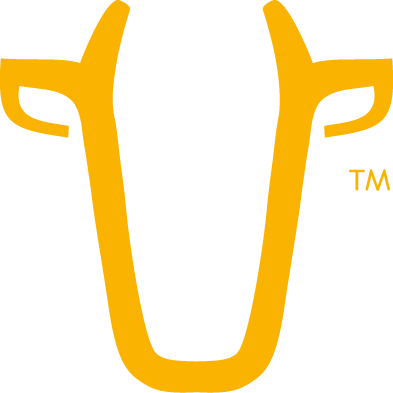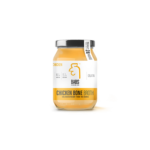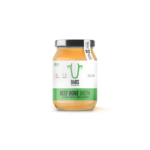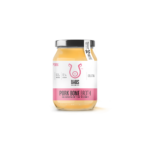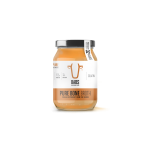Giving birth is an incredible experience that can leave a lasting impact on a woman’s body. Running can be a fantastic way to regain fitness, improve mood and feel like yourself again. However, it is essential to approach running after giving birth with patience and caution. Rest and recovery are critical after pregnancy, so before beginning any running routine, it is important to seek advice from a pelvic floor physiotherapist to assess the condition of your pelvic floor and abdominal muscles.
In this article, we will explore the benefits of running after giving birth, tips and strategies for preparing to run, and a postpartum running schedule designed to help you gradually increase your running time and distance. Remember to be patient with yourself, listen to your body, and always consult your healthcare provider if you experience any pain or discomfort. Let’s get started!
Importance of Pelvic Floor Health and Gradual Progression
The pelvic floor muscles are essential for maintaining the stability of the pelvis and supporting the bladder, bowel, and uterus. During pregnancy, these muscles can become weakened or damaged due to the increased pressure on the pelvic area. A pelvic floor physiotherapist can assess your pelvic floor muscles and advise you on the appropriate exercises to strengthen them. They can also evaluate how well your abdominal muscles have closed and how your core muscles are functioning.
Once you have received the green light from your pelvic floor physiotherapist, you can begin following a postpartum running schedule. This schedule is designed to help you gradually increase your running time and distance over several weeks. It is a safe and effective way to get back into running after pregnancy, whether you are a beginner or a seasoned athlete.
Remember, the key to postpartum running is to be patient with yourself and listen to your body. If you experience any pain or discomfort, it is essential to stop running and consult your healthcare provider. With the right mindset and approach, running can be an enjoyable and rewarding way to take care of yourself after giving birth.
The Benefits of Running After Giving Birth
Running after giving birth can offer a variety of physical and mental benefits. Here are some of the ways that running can help new moms feel better both physically and emotionally:
- Improved Cardiovascular Health: Running is a great way to improve your cardiovascular health, which can help reduce your risk of heart disease, stroke, and other health conditions.
- Stress Relief: Running can be a great way to relieve stress and anxiety, which is particularly important for new moms who may be experiencing a lot of stress and sleep deprivation.
- Mood Boosting: Running can also be a great way to boost your mood and help you feel more energized and positive. Exercise releases endorphins, which are natural mood-boosting chemicals that can help you feel better overall.
- Increased Energy: Even though it may seem counterintuitive, regular exercise like running can actually help increase your energy levels over time. By improving your overall fitness and endurance, you’ll be able to tackle the demands of new motherhood with more energy and resilience.
- Improved Body Image: Many new moms struggle with body image issues after giving birth. Running can be a great way to improve your body image by helping you feel more confident and strong in your body.
By incorporating running into your postpartum fitness routine, you can start reaping these benefits and feeling better both physically and emotionally. However, it’s important to approach running safely and gradually, particularly if you’re new to running or haven’t run in a while. That’s why the following sections will provide some tips and strategies for preparing to run after giving birth, as well as a postpartum running schedule that you can follow to get started.
Preparing to Run After Giving Birth
Before you start running after giving birth, it’s important to take a few important factors into consideration.
Medical Clearance
First and foremost, it’s important to get medical clearance from your healthcare provider before starting any new exercise routine, particularly if you had a complicated pregnancy or delivery. Your healthcare provider can help you determine when it’s safe to start running and provide guidance on any precautions or modifications you may need to make.
Choosing the Right Gear
Running requires minimal equipment, but it’s important to choose the right gear to ensure that you’re comfortable and safe. A supportive sports bra, comfortable running shoes, and moisture-wicking clothing are all important for a successful running experience.
Setting Realistic Goals
When you’re first starting to run after giving birth, it’s important to set realistic goals that take into account your current fitness level, sleep schedule, and other demands of new motherhood. Start with a manageable running routine and gradually increase the time and distance you run as you become more comfortable and confident.
Finding a Training Plan
There are many different training plans available for new runners, and it can be helpful to find a plan that fits your schedule, goals, and fitness level. Many running apps and websites offer free training plans that you can follow, or you may want to consider working with a running coach or personal trainer.
A Postpartum Running Schedule
Here is an example (download Running Schedule) of a postpartum running schedule that you can follow to gradually increase your running time and distance over a period of several weeks:
Week 1: Walk for 20-30 minutes, 3-4 times per week
Week 2: Walk for 15-20 minutes, then alternate running for 30-60 seconds and walking for 1-2 minutes, 3-4 times per week
Week 3: Walk for 10-15 minutes, then alternate running for 45-60 seconds and walking for 1-2 minutes, 3-4 times per week
Week 4: Walk for 5-10 minutes, then alternate running for 1-2 minutes and walking for 1-2 minutes, 3-4 times per week
Week 5: Run for 10-15 minutes, then walk for 1-2 minutes, 3-4 times per week
Week 6: Run for 15-20 minutes, then walk for 1-2 minutes, 3-4 times per week
Week 7: Run for 20-25 minutes, then walk for 1-2 minutes, 3-4 times per week
Week 8: Run for 25-30 minutes, then walk for 1-2 minutes, 3-4 times per week
Week 9: Run for 30-35 minutes, then walk for 1-2 minutes, 3-4 times per week
Remember to listen to your body and make modifications or adjustments as needed. It’s also important to stretch before and after your runs and to focus on recovery and rest days to prevent injury.
Why Drinking Bone Broth Protein Collagen is a Good Idea When You Start Running
Bone broth protein collagen is a great supplement to include in your diet when you start running. Here are some of the benefits of bone broth protein collagen for runners:
- Joint Health: Running puts stress on your joints, and this stress can lead to inflammation and pain. Bone broth protein collagen contains collagen, a protein that is an important component of joint cartilage. Consuming collagen can help to reduce joint pain and stiffness, making it easier for you to run without discomfort.
- Muscle Recovery: Running also puts stress on your muscles, and it’s important to provide your body with the nutrients it needs to recover effectively. Bone broth protein collagen contains glycine, an amino acid that is important for muscle recovery. Consuming glycine can help to reduce muscle soreness and improve muscle function, allowing you to run more comfortably and with less risk of injury.
- Hydration: Staying hydrated is important for runners, as dehydration can lead to fatigue and decreased performance. Bone broth protein collagen can be a good source of hydration, as it contains water as well as electrolytes like sodium, potassium, and magnesium. Consuming bone broth protein collagen can help you to stay hydrated during and after your runs, making it easier for you to perform at your best.
- Nutrient Density: Bone broth protein collagen is a nutrient-dense food, meaning that it contains a variety of vitamins, minerals, and other beneficial compounds. Consuming bone broth protein collagen can help to support your overall health and well-being, which can in turn improve your running performance.
Running after giving birth can be a great way to improve your postpartum fitness and feel more like yourself again. By following a postpartum running schedule, preparing properly, and setting realistic goals, you can start reaping the many benefits of running in a safe and effective way. If you want to support your running journey and enhance your joint health, muscle recovery, hydration, and overall well-being, you might want to consider incorporating bone broth protein collagen into your diet. Drinking bone broth protein collagen can help you reap these benefits and optimize your overall running experience.
Important Remark:
We do not have a medical background and cannot make specific recommendations for individual situations. Generally, it is advised to wait to start running until you are 4-6 months postpartum and have received approval from your doctor and pelvic floor physical therapist. However, it is important to remember that every woman is different and it is important to listen to your own body and take the necessary precautions before starting to run.
A good way to start running after giving birth is by following a postpartum running program that takes into account the changes in your body after childbirth. Always consult with your doctor and pelvic floor physical therapist before starting to run after giving birth.
Footnotes
- American College of Obstetricians and Gynecologists. (2018). Exercise after pregnancy.
- Royal College of Obstetricians and Gynaecologists. (2019). Exercise in pregnancy.
- Mottola, M. F., Davenport, M. H., Ruchat, S. M., Davies, G. A., Poitras, V. J., Gray, C. E., … & Zehr, L. (2019). 2019 Canadian guideline for physical activity throughout pregnancy. British Journal of Sports Medicine, 53(24), 1540-1547.
- Nygaard, I., Barber, M. D., Burgio, K. L., Kenton, K., Meikle, S., Schaffer, J., … & Wu, J. (2008). Prevalence of symptomatic pelvic floor disorders in US women. Jama, 300(11), 1311-1316.
- Bø, K., & Brækken, I. H. (2012). Does postpartum pelvic floor muscle training program improve urinary incontinence? A randomized controlled trial. Obstetrics and gynecology, 119(2), 325-331.
- Price, B. B., Amini, S. B., Kappeler, K., Higgins, M., Keller, J., & Wachtel, M. (2017). Exercise in pregnancy: effect on fitness and obstetric outcomes-a randomized trial. Medicine and science in sports and exercise, 49(9), 1713-1720.
- Mottola, M. F., Davenport, M. H., Ruchat, S. M., Davies, G. A., Poitras, V. J., Gray, C. E., … & Zehr, L. (2018). No. 367-2019 Canadian Guideline for Physical Activity throughout Pregnancy. Journal of Obstetrics and Gynaecology Canada, 40(11), 1528-1537.
- Price, B. B., Amini, S. B., Kappeler, K., Higgins, M., Keller, J., & Wachtel, M. (2017). Exercise in pregnancy: effect on fitness and obstetric outcomes-a randomized trial. Medicine and science in sports and exercise, 49(9), 1713-1720.
- Mottola, M. F., Davenport, M. H., Ruchat, S. M., Davies, G. A., Poitras, V. J., Gray, C. E., … & Zehr, L. (2019). 2019 Canadian guideline for physical activity throughout pregnancy. British Journal of Sports Medicine, 53(24), 1540-1547.SEO- zoekwoorden: postpartum hardlopen, hardlopen na de bevalling, postpartum hardloopschema, postpartum fitness, hardlopen voor nieuwe moeders, beginnen met hardlopen na de zwangerschap.
